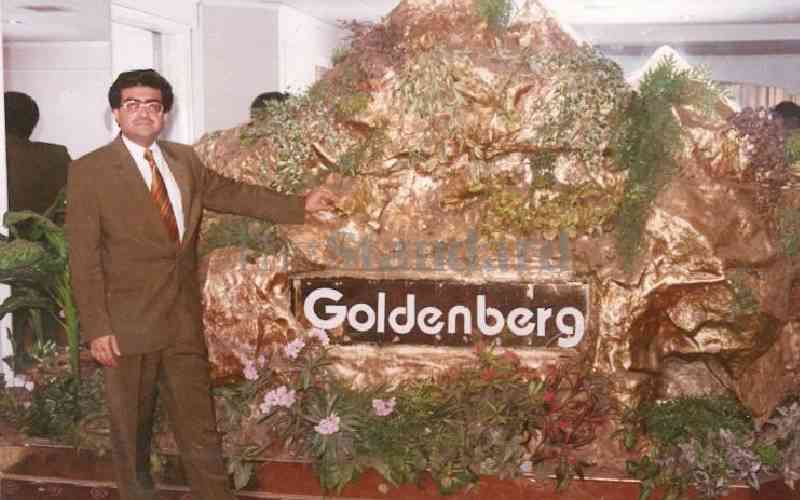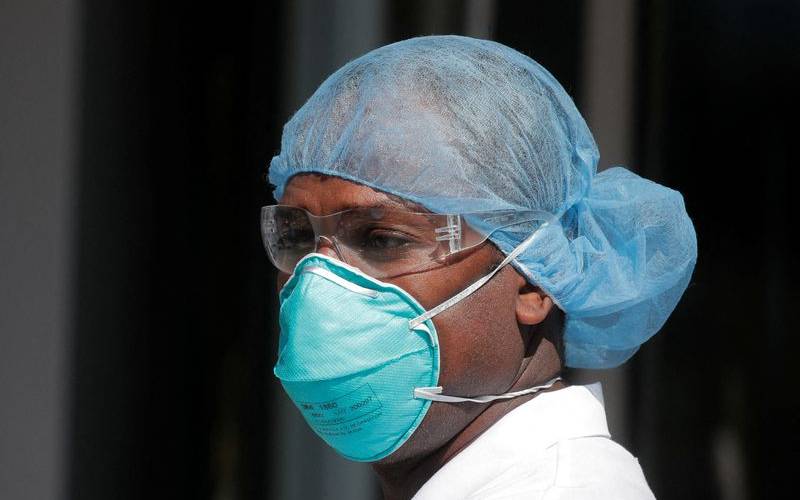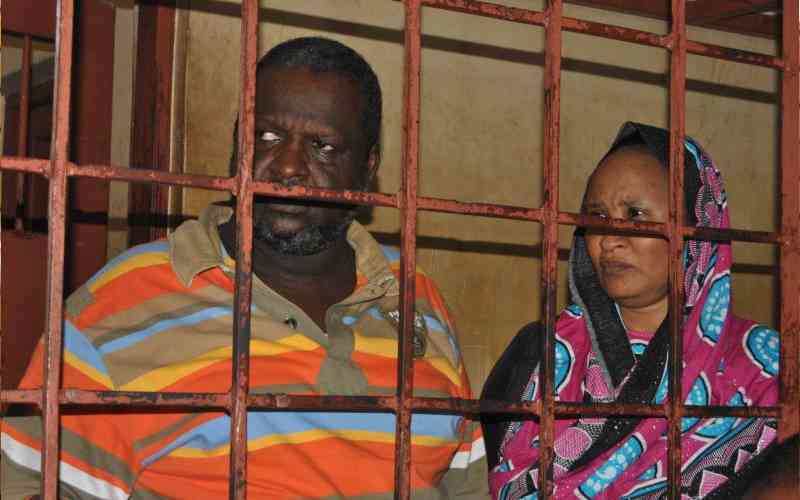Lorem ipsum dolor sit amet adipisicing elit. Sapiente fuga nisi rerum iusto intro.
Lorem ipsum dolor sit amet adipisicing elit. Sapiente fuga nisi rerum iusto intro.


The Goldenberg scandal, masterminded by Asian tycoons supported by some government officials at the Central Bank of Kenya (CBK) and the Treasury, is documented as Kenya’s largest theft of public funds.
The exact amount of money that the country lost has never been established, but the audit done by a British tax expert during the Goldenberg Commission of Inquiry instituted by President Mwai Kibaki said Sh158.3 billion was pilfered.
A common feature between the billionaires and the senior people in government was that they co-owned banks, which were used to either launder or hide the huge proceeds of crime.
The most notable among the moguls were Kamlesh Pattini, the main architect now based in Dubai, and banker Alnoor Kassam, owner of Trade Bank who fled the country after fleecing CBK of more than Sh1.5 billion.
Others were Ketan Somaia, who appeared to have beaten Pattni at his own game by defrauding him part of the Goldenberg loot, and the late Mohammed Aslam, who owned Pan African Bank and the Grand Regency Hotel, now known as Laico Hotel, in Nairobi. Somaia ran Delphis Bank Ltd.
State House connection
Pattni owned Exchange Bank, which he registered with the then-powerful head of the National Intelligence Service James Kanyotu and Kassam.
It is also worth noting that Aslam and the late Abraham Kiptanui, who was the Comptroller of State House and President Daniel Moi’s personal assistant, owned almost all of the Pan African Bank shares.
It was reported that when Aslam decided to build the Grand Regency in 1985, all 2,000 shares were divided between Moi (800), Aslam (1,020), C Kirubi (80), W Murungi (60) and G Lindi 40 shares.
The main player in the infamous scandal was Goldenberg International Ltd, a company Pattni founded with Kanyotu after asking him to pitch the gold exports idea to President Moi and other senior officials at the Treasury.
It was easy to convince senior people in government to accept the deal because the country was going through a serious shortage of foreign exchange and could not therefore purchase crude and refined oil, among other crucial imports.
The scandal therefore occurred at a time of severe economic downturn that seriously crippled the country in the early 1990s.
Pattni is said to have met Kanyotu buying a suit at a shop on Tom Mboya Avenue, where he was also shopping for a bag. He convinced Kanyotu that Kenya was losing a lot of its gold and diamond through smuggling, yet the country could bring in large amounts of foreign exchange if the trade was done legally with an incentive to traders through an export compensation scheme.
Pattni was also aware that Kenya had very little gold deposits that came mainly from gold panning in West Pokot and the western region. Most of the minerals were being smuggled into the country from Eastern Zaire now known as the Democratic Republic of Congo.
After Goldenberg received the permits to commence trading with an incentive of 35 per export compensation that was way above the normal 15 per cent, Pattni created an intricate web of banks to process payments he was receiving at an alarming frequency from CBK.
Most of the trading went through Kassam’s Trade Bank, ironically housed at the current Integrity House, the Ethics and Anti-Corruption Commission (EACC) headquarters.

Because of the overwhelming business, he acquired Delphis Bank from Somaia and also opened accounts in other small banks like Prime Bank that were later consolidated by the government.
To show that he was indeed in serious export business, he also opened international banks accounts in Geneva, New York and some tax havens in Europe.
Citi Bank New York then raised a red flag, stopping one transaction after a large sum of money was deposited from an unexplained source.
Leaking loopholes
That is when Pattni and Kanyotu thought it prudent to start their own institution and quickly opened Exchange Bank, that together with Goldenberg International would become the main players in the scandal.
Forensic accountant Melville Smith, who helped unearth the scam for the Goldenberg Inquiry, said Pattni and Goldenberg International abused the Export Compensation Act, Pre-Shipment Finance and the Retention Scheme that all became instruments of fraud.
The exchange rate fluctuation between the shilling and the dollar also created room for the banks engaging in overnight transactions to make a lot of money, a loophole that Exchange and Goldenberg fully exploited.
Smith also told Justice Samuel Bosire-led commission that cheque kiting also created room for looting from CBK because Goldenberg was allowed to fraudulently use uncleared cheques with non-existent money in their accounts at various banks, sometimes taking weeks before the cheques matured.
It was also revealed that Kassam, who had been listed as the majority shareholder of the Trade Bank, was accused of using fake documents to earn the enhanced export compensation that Pattni had bargained for with the government.
When he returned to Kenya in 2012, Kassam told The Standard that he was tormented by suicidal thoughts before he decided to book a flight to either heal or die.
“When I left Kenya, there were 25,000 Diners cardholders and 60,000 Trade Bank depositors. I fled because I was worried about my life and was more concerned about my wife and children. I’ve now realised that at the age of 65, my biggest mistake then was to flee Kenya.”
Smith spent weeks in cross-examination, telling Kenyans the Trade Bank owner used a long list of companies to apply for pre-export finance, a soft loan facility which Central Bank was giving out to promote exports from 1991 to 1993.

Canada hideout
Trade Bank liquidator Daniel Ng’atuny also told the two-year public inquiry that Kassam and his partner Ian Rayner fled soon after the bank collapsed in April, 1993. CBK had lost Sh2.5 billion.
They could not be brought back because Kenya did not have an extradition treaty with Canada, and could not be tried abroad because it would have been very expensive, the inquiry was told.
During cross-examination by lawyer John Khaminwa, Ng’atuny revealed that CBK Governor Eric Kotut had told the Deposit Protection Fund Board in a meeting on January 6, 1992, that Trade Bank was facing financial difficulties and could therefore not pay a Sh600 million loan it had received from the fund.
He said the bank’s problems arose from press reports that associated it with powerful Cabinet minister Nicholas Biwott whose HZ Group also owed the bank Sh500 million that was never repaid.
Part of the Goldenberg proceeds were used to construct Trade Bank Centre, which would later be seized by the government to house the anti-corruption agency.
Sh570 million loaned out of Aslam’s Pan African Bank was also lost after his mysterious death. It was used to construct his Uhuru Highway Hotel project that would later be acquired by Pattni and renamed Grand Regency Hotel.
Somaia, a Kisumu born businessman, appeared the most controversial. In 2014, he was jailed for eight years in the UK for conning two business partners. He had received money without paying any collateral, taking advantage of the British customs by assuring his victims that his word was his bond.
The Daily Mail quoted judge Richard Hone describing him as “fundamentally dishonest” in his dealings with Murli Mirchandani and Dilip Shah.
In Kenya, he owned Miwani Sugar Company and car dealer Marshals Easter Africa among other companies, that he later sold to Pattni in controversial deals.
Pattni told the Goldenberg inquiry that Somaia conned him over Sh1.2 billion after treating him and others to a private jet flight to London, which involved partying and merry making with nude women.
Pattni later sued EACC seeking to recover Sh140 million he claimed was legal fees after the anti-corruption agency seized properties Somaia had sold him without full disclosure of their liabilities.
In August, 2015, the EACC told the court that the 14 companies it took over in 2003 were in public interest because they were all connected to the Goldenberg scandal.

To personalise content, tailor ads and provide best user experience, we use cookies. By using our site, you agree to use our cookies. Privacy Policy
Subscribe to our newsletter and stay updated on the latest developments and special offers!



